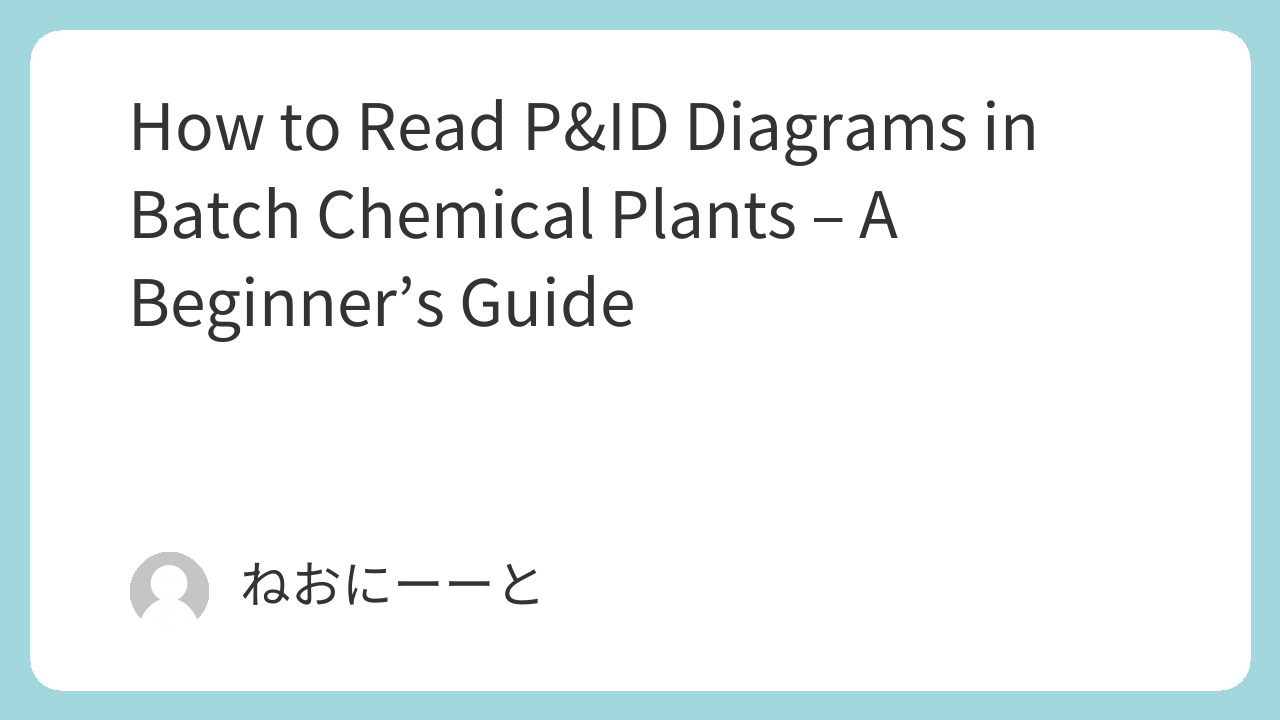P&ID (Piping and Instrumentation Diagram) may look confusing at first, especially in batch chemical plants. These diagrams include various tanks, valves, and instruments—and they don’t follow a strict layout like process flow diagrams (PFDs). But once you know what to focus on, P&IDs become powerful tools to understand plant design and operations.
In this article, we’ll explain how to read P&IDs in batch chemical plants, using simple terms and focusing on real-world examples.
Beginner’s Guide to P&ID Instrument Symbols – What Do Those Letters and Circles Mean?
P&ID Symbols 101 — How to Read Equipment, Piping and Valve Symbols (Practical Guide for Plant Engineers)
1. What Makes Batch Plant P&IDs Unique?
Batch chemical plants are often flexible and modular. Unlike continuous plants, batch plants may have:
- Many tanks connected by shared piping
- Manual valves (instead of fully automatic control)
- Various modes of operation (filling, heating, draining, etc.)
This flexibility means that P&IDs can look messy or “cluttered” because they try to show all possible operation patterns.
2. Key Symbols to Recognize
Before reading the flow, get used to these symbols:
- Tanks (with heating jackets or coils)
- Manual valves vs. control valves
- Instrument tags like “TI” (temperature indicator) or “LC” (level controller)
- Lines: solid for process, dashed for instruments
Don’t worry about memorizing all at once. Focus on what’s most used in your plant.
3. How to Read the P&ID Step-by-Step
Here’s a basic approach:
- Start with the tanks: Look at where they are and how many.
- Trace the piping: Follow the lines to understand the material flow.
- Check valves and instruments: What kind of control is happening?
- Note utility lines: Such as steam or cooling water connections.
- Don’t panic about complicated parts: Skip them on your first pass.
You can always come back after understanding the basics.
4. Common Confusions
- Why are there two valves in a row? → It might be a safety setup or an isolation + control combo.
- Why do some lines cross? → It doesn’t mean they connect; check for a connection dot.
- Why does this tank have no drain? → It might drain through another shared line.
These details come with experience—don’t expect to master everything immediately.
Summary
Reading a P&ID for a batch chemical plant is all about knowing where to look:
- Start with the tanks and flow direction.
- Learn the common symbols gradually.
- Don’t worry if it looks chaotic—it’s normal for batch systems.
As you gain experience, P&IDs will feel more like a map and less like a puzzle.

Comments